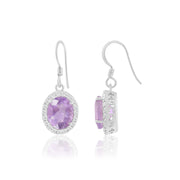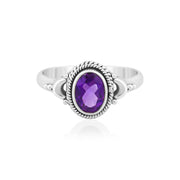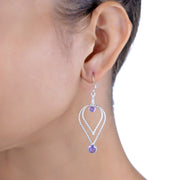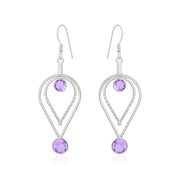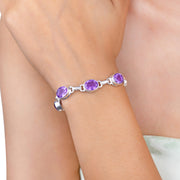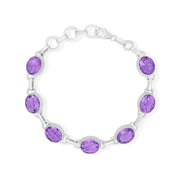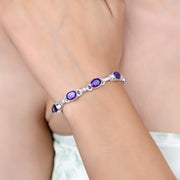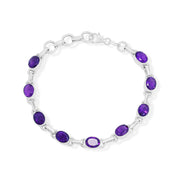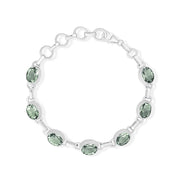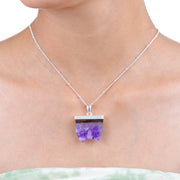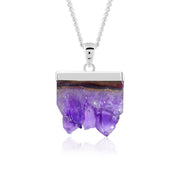From all shades of deep violet to bright purple, our Amethyst jewellery has an irresistible charm to it, making February just more special.

AMETHYST
Occurring in primary hues from light lavender to deep purple, amethyst is a violet variety of quartz. It is the most valuable variety of quartz. Having a similar range of deep purple and light bluish colour shades, this semi-precious gemstone is considered an excellent substitute for Blue Sapphire, which is a precious gemstone that also has benefits similar to amethyst. It is a popular choice for crystal enthusiasts and jewellery making, due to its vibrant colour range and affordability. Green amethyst is the outcome of intense heat treatment done to change the amethyst colour from purple to green.
Amethyst is also known as ‘Jamuniya’ or ‘Katela’ in Hindi.
Cultural Significance
Having a rich history of being considered one of the most exquisite stones in ancient times, amethyst was believed to ward off evil spirits and keep the wearer secure by providing them with clear thoughts and strong intuition. It had been a symbol of affection, devotion, and divine shielding for ages. It is considered to be the birthstone of February.
In ancient Greece, amethyst was believed to prevent drunkenness; hence, people used to drink wine from amethyst cups or wear amethyst to stay sober.
Benefits
Amethyst has a hardness of 7 on the Mohs scale, making it a durable gemstone suitable for use in various types of jewellery, having the following benefits:
*Promotes clarity of thoughts
*Enhances meditation
*Calms the mind
*Aids in spiritual growth
*Helps in emotional balance
*Shields against negative energy
Astrological Significance
Vedic - In Vedic astrology, amethyst is recommended for Capricorn (Makar) and Aquarius (Kumbh). It is associated with the planet Saturn, and it strengthens weaker Saturn, bringing an impulse to invent, innovate, and discover.
Western - In Western astrology, amethyst is prescribed as a birthstone for Pisces, which can also be worn for its benefits by Gemini, Taurus, and Virgo.
Origin - Brazil and Uruguay are two of the major sources of amethyst, having several large deposits of fine-coloured amethysts. Other countries like Zambia, Russia, Myanmar, India, Madagascar, and Sri Lanka also produce amethyst, and the best purple colour is associated with African amethyst.
Environmental Impact - While amethyst mining provides economic benefits, it is crucial to consider and mitigate its environmental impacts through sustainable mining practices and responsible management.

